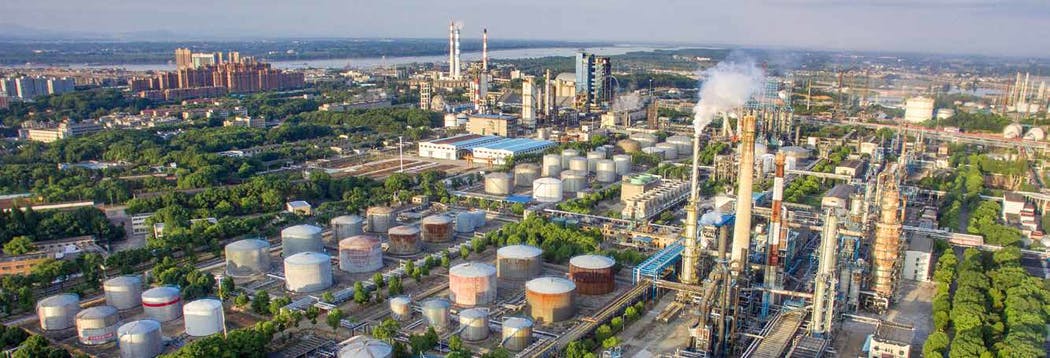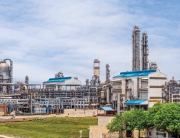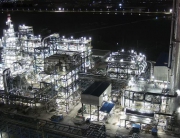China Petroleum & Chemical Corp. (Sinopec) subsidiary Sinopec Anqing Co.’s has commissioned a new unit based on composite ionic liquid (IL) alkylation technology for production of high-octane alkylate at its 161,000-b/d refinery in Anqing, Anhui Province, China.
Operational as of late-March, the newly commissioned 7,400-b/d (300,000-tonnes/year) unit is equipped with Beijing-based China University of Petroleum’s Ionikylation process, which enables Sinopec Anqing to produce high-octane alkylate free of sulfur, benzene, olefins, and aromatics, ensuring the refinery’s fuel production complies with China’s current National VI-A (equivalent to Euro 6) emission standard, Well Resources Inc.—the technology’s global licensor—said.
“We are very pleased with the smooth and successful [startup] of this new alkylation unit,” said Qingsong Qian, Sinopec Anqing’s deputy general manager, adding that the refinery’s implementation of the environmentally friendly Ionikylation technology aligns with Sinopec’s broader ESG mandates.
Sinopec Anqing’s commissioning of the new unit—which completed construction in 2019—marks operation of the third Ionikylation unit in Sinopec’s refining system.
Sinopec previously revamped brownfield alkylation units with Ionikylation technology at Sinopec Jiujiang Co.’s 161,000-b/d refinery in Jiujiang City, Jiangxi Province, China, and Wuhan Petrochemical Co. Ltd.’s 161,000-b/d refinery in Wuhan City, Hubei Province.
Alongside reducing operational hazards by eliminating the presence of strong acids (e.g., hydrofluoric acid, concentrated sulfuric acid) required by more traditional alkylation processes, Ionikylation also will help Sinopec refineries meet China’s national goals in alignment with the global energy transition.
“As the world moves towards an increasingly sustainable and decarbonized economy, the use of clean-burning transportation fuels will only become more pronounced,” said Warren Chung, president of Well Resources. “Ionikylation [meets] evolving fuel standards while allowing operators to ensure that their staff and nearby communities are afforded the highest levels of safety.”
Source: www.ogj.com







